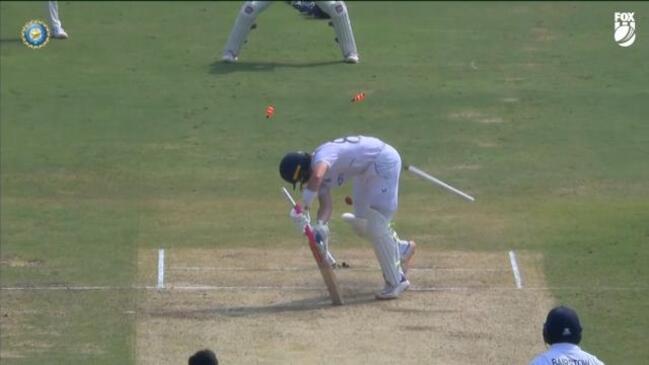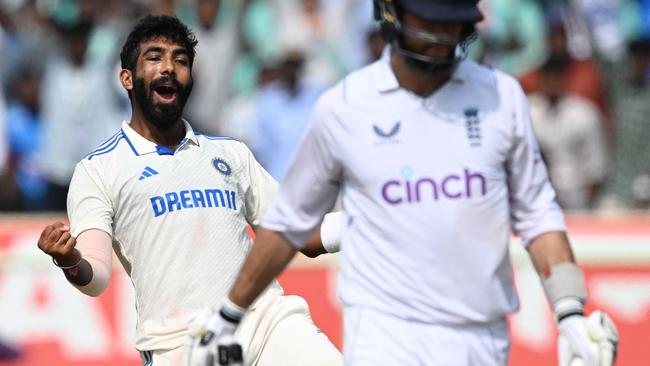How Australia’s housing crisis may shape the next generation of cricketers
The best ball in cricket was perfected by a player in a home hallway, while backyards and streets have shaped the playing styles of generations of players. ROBERT CRADDOCK asks, what happens when there are no backyards play in?

Sport
Don't miss out on the headlines from Sport. Followed categories will be added to My News.
Who would have thought, in a sport dominated by cutting edge computer analysis, cricket’s greatest modern weapon could be perfected by a boy trying not to wake up his mum?
It really was that simple.
The epic yorkers bowled by India’s destructive fast bowler Jasprit Bumrah – including the one which produced this week’s memorable photo of English batsman Ollie Pope’s cartwheeling stumps – were fine-tuned in the hallway of a humble Ahmedabad family home many years ago.
A young Bumrah realised he could practice his fast bowling indoors and the quietest possible sound he could make – one which would not ruin mum’s sleep - was to ensure there was no double bounce on the wall and floor.
Bumrah needed to hit the corner where the wall and the floor met so there was only one sound and a soft one at that.
He did it thousands of times in practice, perfecting his laser-like yorker, the most feared delivery in modern cricket which he later refined in backyard and street cricket, enhancing the legend of homespun cricket heroes.

NSW premier Chris Minns was under attack this week for a duel-occupancy Sydney housing plan which his rivals claim would destroy backyard cricket.
The truth is – sad to admit it – much of the damage has been done.
If you don’t believe me go out in to your suburb this week and try and find a game of backyard cricket. You’ll see more swipes of phones than over cow corner.
Smaller blocks and the distracting force of phones have cut a swathe through backyard numbers over the past decade.
It’s a shame because when you trace back the careers of most Australian greats they have a feature of their game shaped by what happened in their backyard or inside the family home.
When Doug Walters, a brilliant player of spin, advanced down the wicket to the first ball he faced in Test cricket as a 19-year-old a nation held its breath in disbelief.

But he had grown up on an 8000 acre farm with ant bed pitch and knew how to play spin as the ball darted at freakish angles off the deck.
“The wicket on our farm really spun a lot and that helped me all the way through,’’ Walters told this masthead.
“With housing lots the size they are now there would be a lot of sixes and outs. But I honestly don’t see backyard cricket being played at all around my suburb (Carlingford) in Sydney or in other suburbs.’’

Steve and Mark Waugh grew up in a backyard sloping down towards the leg-side and therein lies the reason why both players were dynamite off their pads.
On the other side of Sydney Steve Smith used to face his father Peter from eight to 10 metres bowling leg-spinners, off-spinners and all sorts of quirky offerings where he simply had to use his feet to counter it.
Ian Healy reckons the reason he was not a big cover driver was that area was blocked by the family home at Biloela so there was not much reward for playing the shot.
Healy’s formidable array of cut shots, however, were developed in the vacant space he deliberately targeted beside the house.
“I think school curriculums have more to them than when we were growing up,’’ Healy said of the decline in backyard cricket’s popularity.
“Kids seem to have a lot of things to go to after school and there is more formal cricket coaching where we would just go home and play.’’
While under siege, backyard and hallway cricket have a current champion in Marnus Labuschagne who still relishes a contest with his mates on souped decks where a Bunnings mat has been deliberately spiced up to deliver pure treachery to batsmen.
The experience could serve him well as soon as next month‘s tour of New Zealand where wickets as green as dish-washing liquid are expected to be waiting.
More Coverage
Originally published as How Australia’s housing crisis may shape the next generation of cricketers





